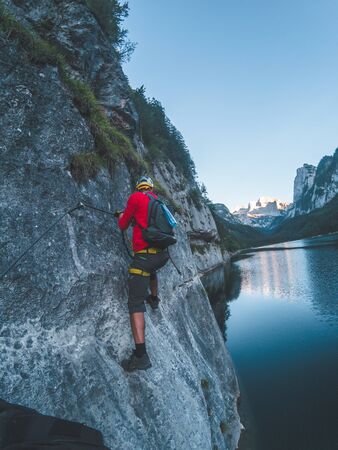1. Understanding the Role of a Steward in the Outdoors
When we head out into nature—whether its leading a group on a multi-day backpacking trip or organizing a weekend family campout—it’s easy to see ourselves as visitors. But outdoor leaders have a deeper responsibility. Being a steward means more than just enjoying the outdoors; it means actively protecting it, respecting it, and teaching others to do the same.
What Is an Outdoor Steward?
An outdoor steward is someone who cares for public lands and wild spaces like they would their own home. This role includes minimizing impact, educating others about responsible recreation, and making choices that preserve natural areas for future generations.
Visitor vs. Steward: Whats the Difference?
| Mindset | Visitor | Steward |
|---|---|---|
| Purpose | Enjoy the outdoors for personal benefit | Enjoy while also giving back and protecting nature |
| Responsibility | Follows rules when reminded | Takes initiative to model and teach best practices |
| Impact | May unintentionally harm environment | Aims to leave places better than found |
The Leadership Connection
If you’re leading others outdoors, your actions set the tone. Are you modeling how to pack out trash? Teaching about trail etiquette? Choosing campsites with minimal impact? Every decision helps shape the outdoor ethics of your group. Leadership isn’t just about navigation and logistics—it’s about influence. As a steward, you lead by example.
The Long-Term Impact of Stewardship
Caring for nature now ensures future generations can experience its beauty too. When outdoor leaders embrace stewardship, they help protect access to trails, parks, forests, and rivers. It’s not just about today’s adventure—it’s about keeping these places wild and welcoming for tomorrow.
Your Role Starts Now
You don’t need a title or special certification to be a steward. Just start with small actions: pick up litter even if it’s not yours, stick to marked trails, and talk openly with your group about why Leave No Trace matters. These little things add up—and they start with you.
2. The Core Principles of Leave No Trace
When youre leading others in the outdoors—whether its a weekend backpacking trip, a car camping adventure, or a group hike—its not just about getting from point A to B. Its about setting the tone for how we treat nature and each other. The Leave No Trace (LNT) principles arent just guidelines; theyre habits that every outdoor leader should embody and teach. Lets break down the seven core LNT principles and see how they apply in real-world outdoor leadership situations.
1. Plan Ahead and Prepare
Solid planning helps prevent accidents and reduces environmental impact. As a leader, you set the example by knowing the area, checking weather forecasts, understanding regulations, and preparing your group accordingly.
Why It Matters:
- Avoids overcrowding by choosing less popular trails or campsites
- Ensures group safety with proper gear and route knowledge
- Reduces resource damage due to unexpected needs
In Practice:
| Activity | Leadership Tip |
|---|---|
| Backpacking | Create a packing checklist tailored to the terrain and weather |
| Car Camping | Research campground rules and fire restrictions ahead of time |
| Group Hike | Review trail maps and communicate expectations with your group before hitting the trail |
2. Travel and Camp on Durable Surfaces
This means sticking to established trails and campsites. As a leader, guide your group to stay on marked paths and avoid trampling vegetation or creating new campsites.
Why It Matters:
- Prevents soil erosion and damage to fragile ecosystems
- Keeps trails usable for future visitors
In Practice:
- Backpacking: Pitch tents at least 200 feet away from lakes and streams on hard-packed surfaces.
- Car Camping: Use designated sites instead of making your own spot.
- Group Hikes: Encourage single-file hiking on narrow trails to avoid widening them.
3. Dispose of Waste Properly
This includes everything from food scraps to toilet paper. Teach your group the motto: “Pack it in, pack it out.”
Why It Matters:
- Keeps wildlife safe by not attracting animals with human food or waste
- Keeps natural areas clean for everyone to enjoy
In Practice:
| Type of Waste | Best Practice |
|---|---|
| Human Waste | Bury in a cathole 6-8 inches deep, 200 feet from water sources (or use wag bags where required) |
| Food Scraps | Packed out in sealed bags—no composting in wild areas! |
| Litter & Trash | Carry out all trash, even if its not yours—lead by example! |
4. Leave What You Find
This principle is about preserving the past and protecting biodiversity. As a leader, encourage curiosity but not collection.
Why It Matters:
- Keeps natural areas pristine for future visitors
- Avoids disrupting local ecosystems or historical artifacts
In Practice:
- Backpacking: Dont build structures or dig trenches unless absolutely necessary.
- Car Camping: Leave rocks, plants, and cultural artifacts untouched.
- Group Hikes: Use this as an opportunity for education—talk about what different plants or rocks are without taking them home.
5. Minimize Campfire Impact
If fires are allowed, keep them small and only in established fire rings. Better yet, use camp stoves for cooking to reduce impact.
Why It Matters:
- Saves wood resources and protects habitats for insects and small animals that rely on dead wood
- Lowers risk of wildfires—a growing concern across many U.S. states
In Practice:
- Backpacking: Skip the fire entirely; use a lightweight stove instead.
- Car Camping: Bring pre-cut firewood from local sources to avoid transporting pests.
- Group Hikes: Educate about fire bans and alternative cooking methods like cold soaking meals.
6. Respect Wildlife
You’re in their home—so act like a respectful guest. Keep your distance, never feed animals, and observe quietly.
Why It Matters:
- Keeps wildlife healthy by preventing dependence on human food
- Avoids dangerous encounters between people and animals like bears or moose
In Practice:
- Backpacking & Car Camping: Store food properly using bear canisters or hanging systems where needed.
- Group Hikes: Spot wildlife? Pause at a safe distance—don’t chase or crowd them for photos.
7. Be Considerate of Other Visitors
The outdoors is a shared space. Teach your group to be mindful of noise levels, trail etiquette, and giving others space at viewpoints or campsites.
Why It Matters:
- Makes the experience enjoyable for everyone out there—whether they’re seeking solitude or adventure
- Cultivates respect among diverse groups enjoying public lands together
In Practice:
- Backpacking & Group Hikes: Yield the trail when appropriate (uphill hikers have right of way), step aside for faster groups.
- Car Camping: Keep music low or use headphones; don’t dominate shared spaces like picnic tables or restrooms.
The seven Leave No Trace principles aren’t just boxes to check—they’re tools that help outdoor leaders foster responsible behavior through example and education. The more consistently you model these practices, the more likely your group will follow suit—and carry those lessons into their own future adventures.

3. Integrating Leave No Trace into Outdoor Education and Leadership
To truly embrace the role of a steward in the outdoors, outdoor leaders must go beyond simply knowing the Leave No Trace (LNT) principles — they need to actively weave them into every part of their leadership, from trip planning to group management. Here’s how you can bring LNT ethics to life when guiding others in nature.
Trip Planning with Purpose
Planning is where responsible leadership begins. By thinking ahead and using the LNT principles during this phase, you set the tone for a low-impact experience. Heres how leaders can plan with stewardship in mind:
| Planning Area | LNT Integration Tip |
|---|---|
| Route Selection | Choose established trails and campsites to avoid damaging fragile environments. |
| Group Size | Keep groups small or split into smaller pods to minimize impact and noise pollution. |
| Gear Checklist | Include reusable containers, trash bags, and trowels to support proper waste disposal. |
| Meal Planning | Opt for low-waste meals and prep food at home to reduce packaging on-site. |
Group Management in the Field
An outdoor leader’s responsibility doesn’t stop once the trip begins. Managing your group with LNT in mind means teaching by example, encouraging participation, and staying flexible based on the environment.
Ways to Lead by Example:
- Model behavior: Pick up litter, stay on trail, and follow fire regulations consistently.
- Teach as you go: Use teachable moments to explain why certain actions matter for nature conservation.
- Create shared responsibility: Assign LNT roles like “trash captain” or “campsite checker” to keep everyone engaged.
LNT-Based Decision Making
Effective leaders use ethical decision-making frameworks that prioritize environmental protection alongside safety and fun. When faced with tough calls — like whether to cross a muddy trail or build a new fire ring — having an LNT mindset helps guide the best choice for both people and planet.
A Simple Framework Using LNT Principles:
| Step | Description |
|---|---|
| 1. Observe | Take time to assess the current conditions — weather, terrain, wildlife activity. |
| 2. Evaluate Impact | Ask: What effect will our actions have on the land, water, or animals? |
| 3. Choose Wisely | Select the action that aligns best with LNT principles, even if it’s not the easiest option. |
| 4. Educate the Group | Explain your decision so others learn how to apply these values themselves. |
The Role of Reflection in Leadership
After each outing, take time with your group to reflect on how well you upheld Leave No Trace ethics. This builds accountability and strengthens future decision-making skills.
Try These Reflection Questions:
- Did we leave the site better than we found it?
- What challenges did we face in minimizing our impact?
- What could we improve next time?
The more you practice integrating Leave No Trace into your leadership style, the more natural it becomes — not just for you but for everyone you guide into the wild. Stewardship starts with intention and grows through everyday actions.
4. Modeling Stewardship on the Trail
Being a good outdoor leader isnt just about navigating trails or organizing gear — its about setting an example that inspires others to respect and protect nature. When leaders live out Leave No Trace (LNT) principles, they show that stewardship is more than a set of rules — its a way of life. By modeling responsible behavior, mentoring new adventurers, and fostering accountability, leaders can shape a culture that values the outdoors for generations to come.
Lead by Example
One of the most powerful ways to teach Leave No Trace is to walk the talk. Whether its packing out trash, staying on designated trails, or avoiding wildlife disturbance, your actions speak louder than any lecture. When others see you consistently following LNT practices, theyre more likely to do the same.
Everyday Actions That Make a Difference
| Action | Why It Matters |
|---|---|
| Pick up litter (even if it’s not yours) | Shows responsibility and sets a cleanup standard |
| Stick to established trails | Prevents erosion and protects fragile ecosystems |
| Use reusable containers | Reduces waste and encourages sustainable habits |
| Respect quiet hours and wildlife | Promotes harmony with nature and fellow campers |
Mentor New Outdoor Enthusiasts
Everyone starts somewhere. As a leader, you have the chance to guide new hikers, campers, and backpackers in building good habits from day one. Take time to explain the “why” behind LNT guidelines, share personal stories, and invite questions. Being approachable helps newcomers feel confident and supported.
Tips for Mentoring Others:
- Be patient: Not everyone knows the rules — help them learn without judgment.
- Create teachable moments: Use real-time situations as opportunities to explain LNT principles.
- Share your experiences: Let others know how practicing stewardship has enriched your adventures.
- Encourage ownership: Let new participants take part in planning and decision-making around responsible practices.
Create a Culture of Accountability
A strong outdoor community holds itself accountable. Leaders can cultivate this by encouraging open conversations about stewardship, giving positive feedback when people make good choices, and gently correcting harmful behaviors. The goal isn’t perfection — it’s progress and collective care for our wild places.
Cultural Shifts That Stick
| Leadership Action | Cultural Impact |
|---|---|
| Praise small wins (e.g., someone packing out extra trash) | Builds morale and reinforces positive behavior |
| Create group LNT commitments before trips | Makes expectations clear and shared |
| Reflect after outings: What went well? What can improve? | Encourages continuous learning and responsibility |
By showing what responsible outdoor leadership looks like in action, you create ripples that go beyond any single trip. You’re not just guiding people through nature—you’re helping them become its lifelong stewards.
5. Contributing to Long-Term Conservation Efforts
Being an outdoor leader means more than just guiding hikes or setting up camp. It means stepping up as a steward of the land—someone who actively supports the long-term health of our public lands and natural spaces. A key part of embedding Leave No Trace into leadership is helping protect these places through advocacy, community involvement, and partnerships with conservation groups.
Advocating for Public Lands
Outdoor leaders have a unique voice in their communities. You see firsthand how people use and impact nature. Use that experience to speak up for policies and practices that protect parks, forests, trails, and other public lands. This can be as simple as writing a letter to your local representative or encouraging others to support responsible land management decisions.
Ways to Advocate:
| Action | Impact |
|---|---|
| Email or call lawmakers about conservation issues | Keeps public lands on the political agenda |
| Attend town hall meetings | Provides a voice for outdoor users and environmental concerns |
| Share Leave No Trace messages on social media | Raises awareness within your network |
Partnering with Local Conservation Groups
You don’t have to do it all alone. Many organizations are already working hard to protect trails, wildlife habitats, and water sources. Outdoor leaders can make a big difference by teaming up with these groups—whether its volunteering for cleanup days, helping restore trails, or co-hosting educational events.
Examples of Local Partnerships:
| Organization Type | How Leaders Can Help |
|---|---|
| Parks & Recreation Departments | Assist with trail maintenance or lead community hikes |
| Watershed Alliances | Join stream cleanups or educate hikers about runoff pollution |
| Youth Outdoor Programs | Mentor young campers in Leave No Trace ethics |
Engaging Your Community
The more people care about nature, the more likely they are to help protect it. As an outdoor leader, you can build that connection by organizing group hikes, hosting Leave No Trace workshops, or even starting a neighborhood cleanup event. These moments help build a culture of stewardship—where everyone feels responsible for keeping wild places wild.
Tips for Community Engagement:
- Create fun, family-friendly events that welcome all experience levels.
- Tie your activities into national days like Earth Day or National Public Lands Day.
- Acknowledge volunteers efforts—everyone likes to feel appreciated!
The bottom line? When outdoor leaders step up beyond the trailhead and into their communities, they help ensure that future generations will enjoy the same beautiful spaces we do today—all while living out the true spirit of Leave No Trace.


